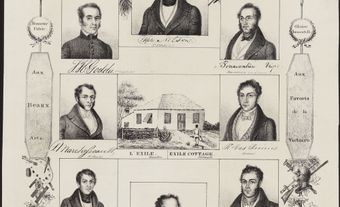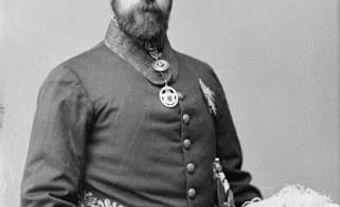Conflict of Interest
Conflict of interest may be defined as a situation in which politicians and public servants have an actual or potential interest (usually financial) that may influence or appear to influence the conduct of their official duties (see PATRONAGE; CORRUPTION). Even when this conflict is not illegal, it may create doubts or suspicions concerning the integrity or fairness of decisions made by such officials, and over time recurring conflicts may increase the level of distrust and cynicism toward government. In Canada, conflicts of interest have arisen when, for example, the ownership of land by the family of a provincial Cabinet minister could have influenced the minister's decision to approve a new subdivision or influence other officials to do so; when a senator invested money in a firm that subsequently received a lucrative government contract; and when a former federal Cabinet minister had dealings with his department that may have resulted in favouritism in the government's decision to issue a grant to the minister's new company.
Except for bribery, influence peddling and FRAUD, which are covered under the Criminal Code, legislation on broader conflict of interest questions has been relatively uncommon in the past. However, in recent years there has been increasing use of statutes, as in the case of Newfoundland (1973), New Brunswick (1978), Manitoba (1983, proclaimed 1985 and amended 1986) and Alberta (1991), to name a few. Indeed the federal government, all ten provinces and the territories have some form (broad or narrow) of conflict of interest legislation. This may take the form of specific acts on conflict of interest, as in the case of British Columbia's Members of the Legislative Assembly (1990), or as part of a more general act on the legislature, as in the case of the federal government's Parliament of Canada Act (amended 1991).
Otherwise, guidelines on conflict of interest, like those originally issued by the federal government for civil servants (1973) and Cabinet ministers (1979), have apparently been preferred by public officials. Continued evidence of this preference is seen in the Mulroney government's federal guidelines for ministers and other public office holders issued in 1985, and the Chrétien government's Conflict of Interest and Post-Employment Code for Public Office Holders (1994). As a rule, guidelines are more ambiguous than statutes. Further, critics argue that guidelines generally do not provide sufficient sanctions to deter potential conflicts, or appropriate mechanisms to determine the existence of violations. When charges of conflict of interest fail to provoke disciplinary actions, however, they may cause such acute political embarrassment that a Cabinet minister may feel it necessary to resign to protect the government's integrity, which, although rare, happened in Ontario in 1972. Most provinces now have codes, guidelines, rules or directives which apply variously to elected legislators, appointed public servants or even to civic officials.
Whether in statute, guideline or code form, conflict of interest documents require that those covered, be they politicians or public servants or both, shall avoid behaviour which places their private interest ahead of the public interest. Typically, this may mean that they may be required to remove themselves from decisions where they have a financial interest, to avoid giving preferential treatment, to not use insider information or government property for personal benefit, to refuse gifts or other benefits of more than nominal value, or to avoid employment after leaving public office that takes improper advantage of their previous position.
There have been several notable cases relating to conflict of interest. A federal inquiry was begun in July 1986 to examine allegations of conflict of interest regarding the business dealings of a federal Cabinet minister, Sinclair STEVENS. The inquiry was to cost more than $2.9 million, and the Mulroney government's popularity declined as a result, in part, of the negative publicity generated by the affair. In December 1987 the report concluded that Stevens had broken the conflict of interest guideline 14 times. Added to this political embarrassment was another Cabinet resignation, this time junior transport minister André Bissonnette, who was accused of improper land deals relating to a government defence contract with Swiss-based Oerlikon Aerospace Inc. As well, British Columbia's former premier William VANDER ZALM was the subject of the Hughes Inquiry (1991), which argued that ethical questions were raised in certain business dealings.
In addition to temporary inquiries, some governments have created offices to deal with conflict of interest matters on a regular basis. For example, the federal government's Office of the Ethics Counsellor (formerly the Assistant Deputy Registrar General) administers its conflict of interest code and post-employment code. BC, Ontario, New Brunswick and Nova Scotia have commissioners on conflict of interest; and Alberta has an ethics commissioner for ministers and legislators. Newfoundland has a conflict of interest tribunal for public servants.

 Share on Facebook
Share on Facebook Share on X
Share on X Share by Email
Share by Email Share on Google Classroom
Share on Google Classroom


